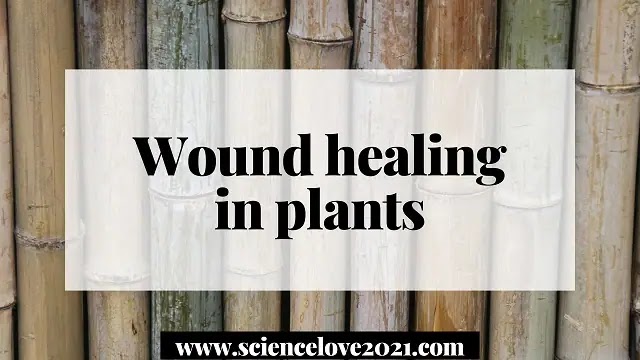Wound healing in plants
Many times we have seen that due to many external reasons, wounds are generated in plants. If the wound is not healed quickly, fungi, bacteria and some other micro-organisms can enter the plants and spread many diseases and excessive transpiration also damages the plant. In the injured tissues, the respiratory rate increases temporarily causing unnecessary expenditure of energy. Therefore it is necessary to heal the wounds.
Small wounds that occur in the outer parts are healed by the following method- the injured cells become dead and dry up. Suberin is produced in the cell walls between them, which protects the cells located below them. Plants that have laticiferous ducts secrete latex which acts as a defense when frozen.
When the wounds are deep, they are filled by the following method -
- The healthy cells around the wound replace the phylogeny with a type of sarcoid parenchyma called a callus. This callus soon covers the wound completely.
- Knots are visible on plants due to the formation of callus. The cells at the edge of the callus get converted into cambium which is called wound cambium. The cells of the trauma tissue form a cork, which is called a wound cork. Thus, the wound is cured.
- Often the callus rises above the wound, due to which some swollen parts are formed on some stems, due to which knots are formed. Knots are formed in other ways as well.
- If the lower branches of the tree are cut before autumn in such a way that some part of the lower part of the branch remains on the stem, then callus is formed on this part and the growth of this part stops. Along with the secondary growth of the stem, this basal part is completely enclosed by the secondary xylem of the stem. This closed grouped part is called a rigid knot. In the old thick stems, these knots become hard and are not visible from outside. The knots are clearly visible when the timber is cut.




No comments:
Post a Comment